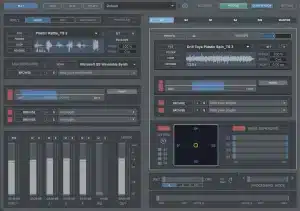5 Tips For Fatter Low End In Your Production 1. START AT THE SOURCE The first place to start, if you want a fat low end in your production is with the arrangement itself. In a rock track this might mean looking at the bass line to be sure it…

8 Pre-Production Tips For Your Next Session
Recording in the studio can be a very stressful experience but with a little homework you can make your next session a lot more enjoyable. In this post I am going to give you some tips that can help you save time and money and make your next session a success.
1. KNOW THE SESSION TIME
This might seem a little too obvious to be considered advice, but keep in mind studios do charge by the hour so if you get your studio time wrong, it could be a very expensive mistake. If you are recording remotely, then be sure to know the time zone as well. I unfortunately once had a remote client miss their session with me because they had miscalculated the time zone, so don’t let that happen to you.
2. GET ENOUGH SLEEP
My father has repeatedly told me the story of the time he accidentally erased a mix by placing the tape reel (it was the 1960s) inside of a guitar amplifier that he was carrying to his car after a session. He attributes his temporary lapse in judgement to having been up for several days without sleep. That is a pretty extreme example, but the point is that when people are tired they make mistakes. In fact, researchers have reported that after 24 hours without sleep we are as impaired as someone with a 0.1% blood alcohol level. So do yourself a favour and be sure to go into your sessions as rested as possible.
3. MAKE A CHECKLIST
Do you know what airline pilots, surgeons and producers all have in common? You guessed it, checklists! That is because checklists are a great way of breaking down a complex task into a series of easy to follow steps or for keeping track of important items and specifications. There are a lot of ways you can put checklists to use, but here are some examples of things I put on a checklist:
Session Time
Sample & Bit Rate
Input List
Floor Plan
Tape (Gaff tape for mic stands and floor, masking for scores & parts)
Musician’s phone numbers
Hard Drives
Cables, Dongles & Converters (be specific)
Food & Water (Do NOT forget to bring water if you are working with a singer)
Scores & Parts (if applicable)
Many of the items on this list may seem too obvious to be worthy of inclusion on a list but you are better off spending the time doing it than run the risk of turning up to the studio only to find that you left that one random cable or connector that you need!
4. FAMILIARISE YOURSELF WITH THE MATERIAL
If you are working on a song, be sure that you are familiar with the arrangement and have listened to the client’s demos thoroughly so you can refer to them and get a sense of their expectations. If you are working with a large ensemble or orchestra, study the scores and take notes ahead of time. Identify sections of the music that might be difficult and come up with a plan to deal with them. On that note…
5. PLAN FOR THE UNEXPECTED
The legendary Mike Tyson famously said “Everybody has a plan until they get punched in the mouth”. While it is highly unlikely (though not impossible) that a fist fight is among the possible outcomes of a failed studio session, you could at the very least lose time, money and or disappoint the client. A good way to prepare for the unexpected is to include booking more studio time than you think you need (within reason) or at the very least reserving the option for more time in the studio in the case that it is needed. Another great strategy is simply hiring an assistant or runner. A good assistant can really come in handy in an emergency situation and help you reduce downtime when something goes wrong.
6. BRING DRIVES
This is mentioned previously, but so important it is worth repeating. Don’t just bring drives but also be sure to know the format of the studio computer (mac or windows) and what i/o it has so you can be sure to bring the right cables or adapters. These days I format all my drives with the EXFAT file system to avoid compatibility issues across Windows and Mac OS as I frequently jump between operating systems. If you are constantly in and out of different studios as well or need to collaborate with people on different operating systems, I highly recommend formatting your drives as EXFAT as well to avoid compatibility issues.
7. HAVE A PLAN
Know what material you are recording and in what order. Consider what the most crucial material is to be captured during the session and what you can live without. It is also just as important to know HOW you are going to record: Will you track the whole band or ensemble at once? Are some pieces best overdubbed? Create a floor plan in advance and speak with the studio engineer in advance to know what is available. If you are not comfortable making decisions about microphones and placements then communicate with the studio engineer about the sound you want and ask for their recommendations. Which me leads to…
8. REFERENCES
Whenever I work with a client, whether a songwriter or another composer, I always ask them to refer me to recordings that are similar to what they want. This is useful not only for the obvious purpose of planning but also can be a great opportunity to educate the client and set realistic expectations about what can be achieved with their budget and our resources.
At the very least references can be whole tracks that have the overall sound you are going for or can be as specific as: “I want the snare sound from this recording,” “I want my strings to sound like this,” etc. In any case, doing your homework will help you be more effective in the studio and get more out of your time!







